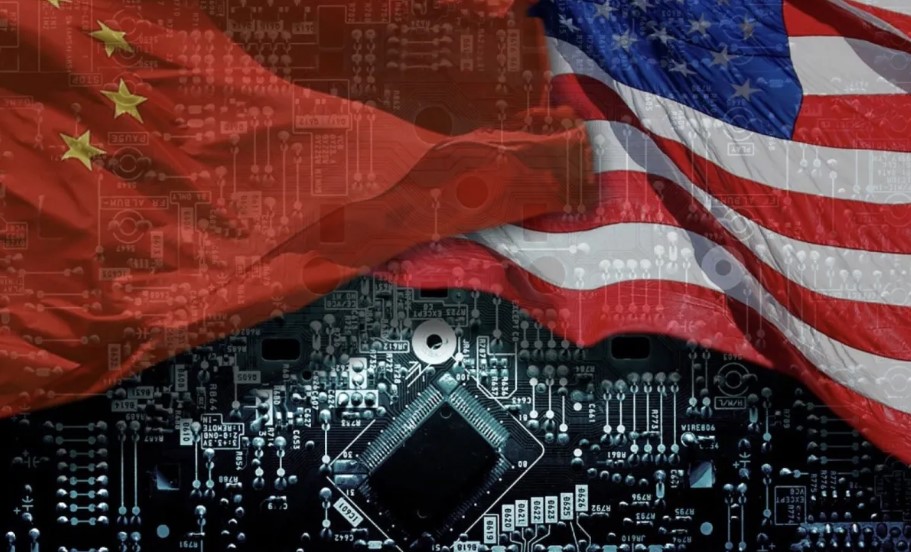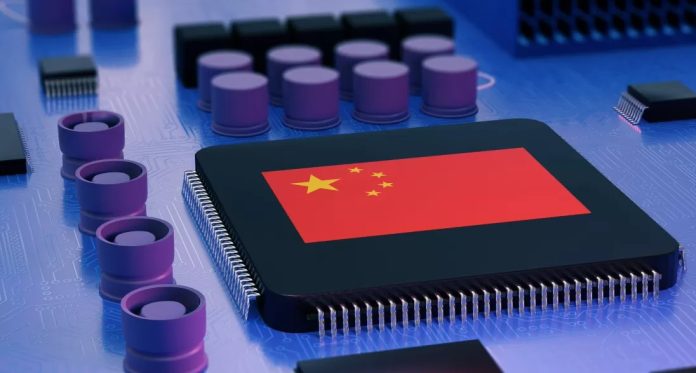China continues to be a crucial market for many American chipmakers, despite Washington’s attempts to limit chip sales to the country and amid Beijing’s drive for self-reliance in the semiconductor industry.
According to data from S&P Global, major U.S. chip companies like Intel, Broadcom, Qualcomm, and Marvell Technology earn more revenue from China than from the United States.
Since October 2022, the U.S. has implemented a series of export controls aimed at curbing China’s access to advanced chip technology, particularly those utilized in artificial intelligence (AI) applications.

“China remains an important market for U.S. chipmakers, and the U.S. restrictions on selling advanced AI chips to China have been designed specifically to allow most U.S. firms to continue selling most types of chips to Chinese customers,” explained Chris Miller, the author of “Chip War,” in an interview with CNBC.
Utilized across a diverse array of products, ranging from smartphones to electric vehicles, semiconductors have emerged as a paramount concern for governments worldwide.
According to figures from tech consultancy Omdia, China consumes nearly half of the world’s semiconductors, given its status as the largest market for assembling consumer devices.
U.S. chip manufacturers, benefiting from their technological superiority over Chinese rivals, have been able to capitalize on this demand, as the export restrictions imposed by the U.S. primarily target specific products.
“There are still numerous ‘high-end’ chips with various permissible applications that remain unaffected, where U.S.-based chip companies maintain a dominant, cutting-edge position,” remarked William B. Bailey, lead technology, media, and telecommunications analyst at Nasdaq IR Intelligence.
Maneuvering Through Export Restrictions
Even U.S. chipmakers, including those primarily focused on domestic business such as Micron Technology, AMD, and Nvidia, have endeavored to cater to their Chinese clientele despite facing export controls.
In response to the initial wave of U.S. restrictions in late 2022, Nvidia and Intel developed modified versions of their AI chip products specifically tailored for the Chinese market.
A year later, the U.S. revised its export regulations to address perceived loopholes. However, shortly thereafter, reports emerged that Nvidia was developing a new chip intended for China.

Intel allegedly continued to supply hundreds of millions of dollars worth of laptop processor chips to U.S.-sanctioned Chinese telecoms company Huawei, benefiting from an export license issued during the Donald Trump administration.
When approached for comment on their strategies regarding the Chinese market, the company did not respond.
AMD has likewise developed an AI chip tailored for the Chinese market, but the company will need to seek an export license after its recent failure to secure approval from U.S. regulators.
Reports indicate that executives from Intel, Qualcomm, and Nvidia were part of a coalition that aimed to lobby Washington against stricter chip restrictions in July of the previous year.
These firms are also members of the Semiconductor Industry Association, a significant U.S. semiconductor trade group.
Around the same time, the association issued a statement advocating for a reduction in tensions and a cessation of additional sanctions, emphasizing the importance of the Chinese market for domestic chip companies.
In response to the firm U.S. stance, China has reciprocated in kind.
In May of the prior year, chips manufactured by Micron, an American company, were barred from critical information infrastructure in China following a review by the country’s Cyberspace Administration.
Despite these challenges, Micron is proceeding with the construction of a new assembly and test manufacturing facility at an existing site in Xi’an, China.
According to a spokesperson for the company, China remains a crucial market for Micron and the semiconductor industry as a whole. Production at the new facility is anticipated to commence in the second half of 2025.
Concerns Over Market Share
In response to limitations imposed by countries like the U.S. and the Netherlands on its access to advanced technology, China has intensified efforts toward self-sufficiency by bolstering its domestic semiconductor industry.
Beijing has allocated substantial subsidies to its chip firms to stimulate domestic manufacturing.

An examination of Huawei’s Mate 60 Pro smartphone by TechInsights revealed an advanced chip produced by China’s leading chipmaker, SMIC.
Additionally, the smartphone reportedly features 5G connectivity, despite U.S. sanctions intended to obstruct Huawei’s access to this technology.
“The Chinese government is becoming more determined to encourage its firms to procure domestically manufactured chips,” Miller remarked. “Unless foreign companies possess a significant technological edge over their domestic Chinese counterparts, they will experience a decline in market share in China.”
Nevertheless, Phelix Lee, an equity analyst at Morningstar, expressed skepticism about the likelihood of “a complete restructuring of the supply chain.” He noted that while Chinese firms might be innovating legacy chips used in a wide range of products, from household appliances to medical equipment, a radical overhaul is not expected.
“Legacy chips” generally refer to mature or lower-end semiconductors. U.S. Commerce Secretary Gina Raimondo noted that approximately 60% of these chips are produced in China.
Brady Wang, associate director at Counterpoint Research, stated that in the AI GPU market segment, American companies like Nvidia and Intel enjoy a technological advantage of approximately three to five years over their Chinese counterparts.
“We believe China can still build up its local GPU supply chain for specific market segments, Wang added, “but the amount will be limited, and the cost will be much higher.”


